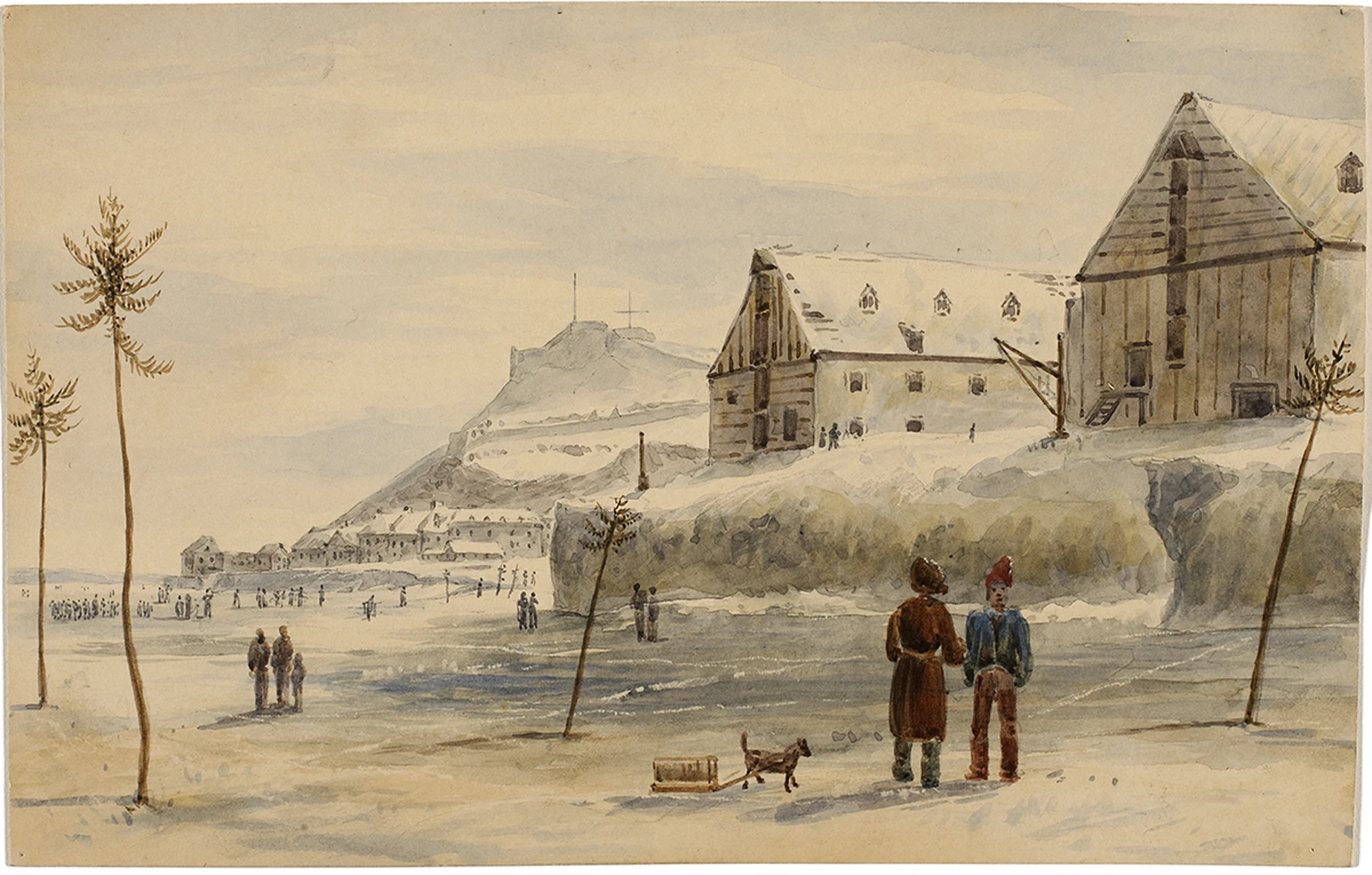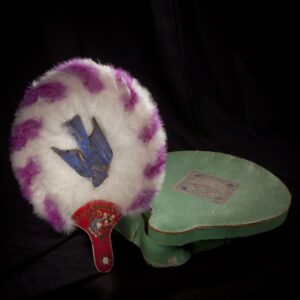James Pattison Cockburn (1779–1847)

James Pattison Cockburn, The Citadel of Quebec from the Ice, 1831
Watercolour over graphite on wove paper, 15.3 x 23.9 cm
National Gallery of Canada, Ottawa
“No other artist working before the advent of photography has provided such a faithful and systematic depiction of a Canadian city,” write Christina Cameron and Jean Trudel in their study of the topographical artist and army officer James Pattison (or Patterson) Cockburn. The book they dedicated to him in 1976 brought together more than 150 of Cockburn’s watercolours and sepia inks documenting the capital and its surroundings. Among these works, The Citadel of Quebec from the Ice stands as a fine example of Cockburn’s contribution to the visual memory of the city during the early decades of the nineteenth century.
-
James Pattison Cockburn, Le cône de glace de la chute Montmorency (The Ice Cone of Montmorency Falls), c.1830
Watercolour, graphite, and highlights of gouache and gum arabic on paper mounted on cardboard, 39.5 x 55.2 cm
Musée national des beaux-arts du Québec, Quebec City
-
James Pattison Cockburn, La place du marché, Québec (Market Place, Quebec City), 1829/30
Watercolour and graphite on paper, 27 x 37.4 cm
Musée national des beaux-arts du Québec, Quebec City
-
James Pattison Cockburn, La porte Dalhousie, Québec (Dalhousie Gate, Quebec City), c.1829
Watercolour on paper, 15.2 x 23.8 cm
Musée national des beaux-arts du Québec, Quebec City
Cockburn embraced military life at an early age, beginning his training at fourteen at the Royal Military Academy in Woolwich, southeast London, where the education of future officers included drawing courses. He benefited from lessons with the renowned watercolourist and engraver Paul Sandby (1731–1809), one of the founding members of the Royal Academy of Arts. The young Cockburn learned to observe and interpret topography with precision, recording even the smallest details of defensive systems and fortifications. Having become an experienced British officer, Major Cockburn was stationed in Quebec City, first for a few months from 1822 to 1823, and later for an extended period from 1826 to 1832.
It was during his second stay that Cockburn truly distinguished himself as a passionate interpreter of the picturesque qualities of the city—its streets, quays, monuments, and architecture (notably the gates of its fortifications), as well as the panoramic views afforded by its elevated site. He consistently chose the best vantage points for the locations he wanted to capture, and his depictions of nature always conveyed a sense of grandeur. For example, Le cône de glace de la chute Montmorency (The Ice Cone of Montmorency Falls), c.1830, shows the sublimity of nature through an overhead perspective, and includes small figures that not only provide a sense of scale but also enhance the majesty of the scene.
Cockburn’s perspective reflects that of a high-ranking and cultured officer. He was renowned for his extreme precision in rendering various sites of the city, which he seems to have wanted to represent as a whole (including both the Upper Town and the Lower Town)—a systematic approach recognized by art historians. Cockburn masterfully conveys the spirit of place, such as the atmosphere of a market day in La place du marché, Québec (Market Place, Quebec City), 1829/30, blending striking details with a keen eye for the local architecture.
By the late 1820s, Cockburn’s works adorned the walls of the fine residences of the well-to-do English gentlemen he associated with in Quebec City. Many were only passing through, but they helped to bring attention to Cockburn’s work throughout the British Empire. Still, his reputation was slow to emerge. It was not until the middle of the twentieth century that his urban scenes became widely known and appreciated.

 About the Author
About the Author
 More Online Art Books
More Online Art Books
 Acknowledgements
Acknowledgements